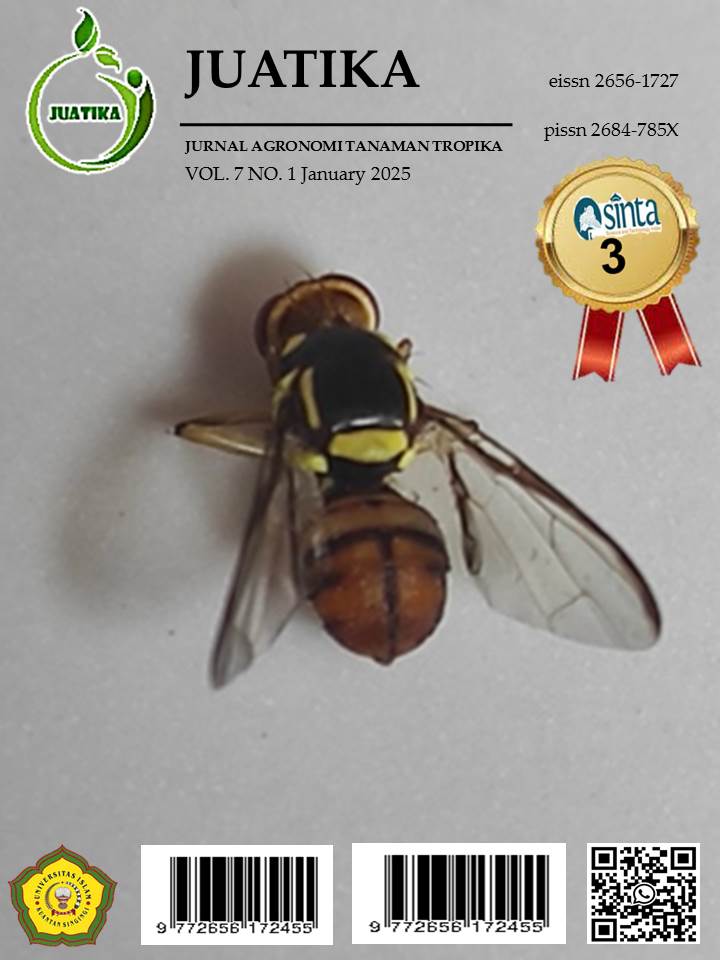This study describes the condition of rejuvenated oil palm plants, the factors influencing their growth and the improvement efforts that can be undertaken to enhance oil palm productivity. The research was conducted on the institutional land of smallholders participating in the community oil palm rejuvenation program (PSR) that had entered the productive plant period (TM) in North Labuhanbatu Regency. The research location was determined by the agroclimatic typology reason, one of which was determined by the representative altitude. The research location was carried out in 3 locations with different altitudes, including Kuala Beringin Village, Kualuh Hulu District (100-115 masl), Pulo Jantan Village, NA IX-X District (32-38 masl) Terang Bulan Village, Aek Natas District (12-17 masl). The study results showed the growth performance of oil palm in the productive plant phase (TM) in North Labuhanbatu Regency. The selection of research locations was based on agroclimatic typology, particularly representative altitude. The study was carried out in three locations with varying altitudes: Kuala Beringin Village in Kualuh Hulu District (100-115 meters above sea level), Pulo Jantan Village in NA IX-X District (32-38 meters above sea level), and Terang Bulan Village in Aek Natas District (12-17 meters above sea level).
DOI:
https://doi.org/10.36378/juatika.v7i1.3931
Score Altmetric:
Dimensions Nombre de citations:


















